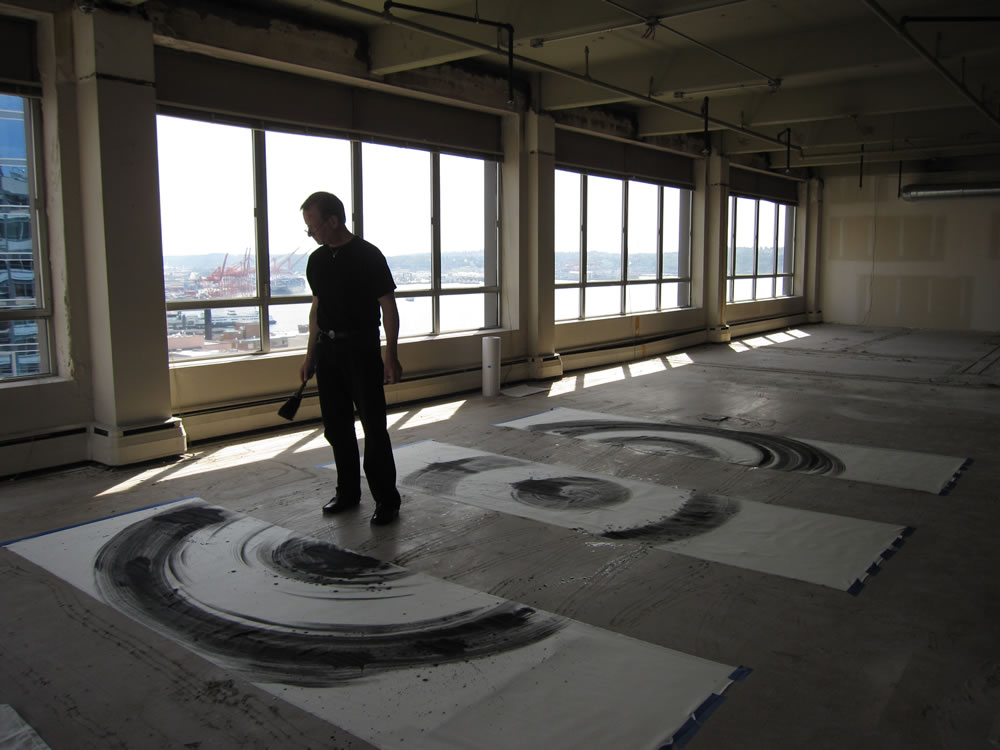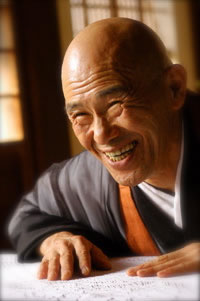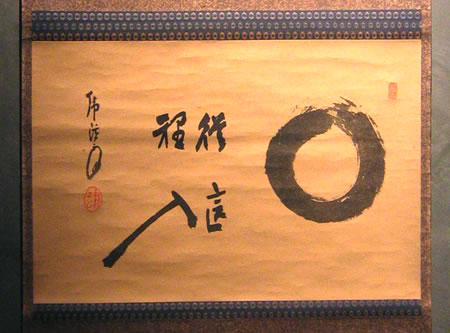BRAND KICKSTART: ZEN MIND, BEGINNER’S MIND

GIRVIN office lobby working session | Seattle
THE IMPETUS OF SPIRITUAL BRANDING
—
EXPLORING THE CONCEPT OF ZEN IN THE CONSTRUCT OF BRANDING
In working with teams, on the implications of their brand, the process is inevitably collaborative. How can I, or Girvin, completely understand without comprehending where any brand currently lives without bridging into that culture? A place in the heart, a place in the person and a place in the community, that sustains that imperative.
Interestingly enough, rethinking that sense of placement — contemplating brand in the context of an environment — can build a sense of “sitting,” and “siting,” how the brand rests in the confluence of market, presence, constituency. That is: sit quietly, absorb and listen, watch and flow — what’s happening here?
In the beginning stages of Zen training, merely sitting, studying Buddhist texts, learning to be quiet, slowing down, emptying mind — watching your self; these are all part of the introspection that moves to detaching from our obsessions with what’s around us, what we’ve cluttered up our lives and minds with — to just a quiet nothing, if you could hope to get just there.
Sitting, gazing into that point just before you allows the meditator, the student of quiet seeing — zazen — to sense things in a different manner.
And to see-in, naked eye, true nature.
How could this possibly relate to brand, then?
For us, the wealth of emotionality and the heart-ful sense of intention implies human passion and commitment — brands are all wrapped up with the heat of emotion, relevant storytelling —
and realness.
Heart and soul.
Quiet reckoning.
Patience, Commitment and focus.
And sitting — you might see anew, in quietude, your watching,
kindles a renewed observation.
And in a way, this concept of sitting requires two points of examination; to one: it’s the idea of a place of looking out at the environment and contemplating the brand relationship to it. And in that framing, considering the spatiality of the place that the brand makes for itself. It’s a world. What world is it? But, two, in the experience of change it’s also a matter of considering what is not there — what’s missing? “The brand lives here, but it’s missing something.” To think about the idea of brand in place — presence, or absence — it takes one to the environment of contemplating what “could be.”
Being quiet, opening up to another vista — listening more. In working with teams, this is mostly the process of evolution that we consider in BrandQuest®, the exploration of the heart and soul of brand (and more over, the people that live there.)
The other side of this “meditation” to the notion of the Zen of branding is about the freedom to consider “potentials”. It’s not thinking inside the brand, but thinking outside of the brand.
As a friend of mine recently intoned — John Edelman, a leader in the firm Cloverleaf, an innovation consultancy — “Shoshin” meaning “Beginner’s Mind,” Shoshin refers to shedding one’s preconceptions about a topic, and adopting – and maintaining – an openness throughout the course of study.
Be innocent. Be naïve.
It is suggested that a naïve perspective – even when studying at an advanced level – provides a critical freshness of thought.
This parable, “Empty Your Cup,” reflecting the principle of
“Beginner’s Mind” comes from
Iron Palm,
Darren Henson:
“A university professor went to visit a famous Zen master. While the master quietly served tea, the professor talked about Zen. The master poured the visitor’s cup to the brim, and then kept pouring. The professor watched the overflowing cup until he could no longer restrain himself. “It’s overfull! No more will go in!” the professor blurted. “You are like this cup,” the master replied, “How can I show you Zen unless you first empty your cup.”
In a way, the concept of open-mindedness and the notion of freedom from “distraction” is a foundational parable of Zen. Empty-out and focus-in.
But — to rethinking branding and beginning — the real principle is about loosening the hold of a conventional positioning and imagine what potentials could lie out there. Letting go — and finding the truth. The concept of the “empty cup” and the overfilled vessel might be, too, the notion of what Marty Neumeier refers to as “onliness”, the idea of a brand proposition as being seen as “the only,” an attribute of renewed definition. Focusing in on the distinctions of what sets the brand story apart from all others. We call that selfsame attribute “brand singularity” — what lies at the heart of uniqueness, the finalized proposition of perfect distinction and differentiation. Being in a questing, asking with an empty hand — and questioning uncertainty — an unknown environment,
like the BrandQuest® allows
for that sense of openness.
You have to, you never know where you might go.

Spending time — one Zendo visit — with the Shodo Harada Roshi,
I sat with him, had tea.
One talk, to reference, an earlier interview on Zen, and metaphor in brand, can be found in this overview, as a profile and notation, from a book on leadership. He is the Master of Sogenji, the monastery in Okayama, Japan. As well, he can be found off and on at the One Drop Zendo on Whidbey Island, Washington, near Langley. It was there that I sat with him. We talked about stories.

GIRVIN ZENGA COLLECTION:
Hoshino Taigen (Saishokan) • 1865 – 1945
“Enter from here.”
Photograph by Deanna Carroll
There’s a certain character, to the spirit of this master and it relates to the drawing of the Zen circle, the enso. Traditionally, it is the provenance of those that have experienced satori or enlightenment, the character of this “ring of bone” as I call it, is the nature of what lies within and what lies without. What one has, and what one doesn’t — what’s in, and what’s out?
In drawing the circled stroke, are you inside or outside — connected to the sinuous spatter of the inked brush, or the sound of paper drawn, in the rasping of the brush on paper?
What do you see?
White, black or the space between?
Like the parable of Zen and brand (Roshi, forgive me) it is about focus and attention; but it is, as well, about the idea of sitting in the contemplation of place, where do you sit? And quieting, what silence in added potential, as you see — and sense — outside the boundaries of experience?
Contemplating:
builds on the premise of the power of the force; which is about people, about story, literally — it’s about everything — enchanted at the heart of meaning and resonance.
I’m perpetually looking for something more, something deeper in the studied engagement in the work that we all do. As a designer — I can’t leave it just as designing something, but could it be more, more beautiful — contribute something? Strategy — is that mechanics, or really, as it etymologically references — the management of the stratos — arrayed field, the structure, and — act, the leadership to move. More from Phil, on that front.
I interviewed for a job and I decided that I didn’t really like the person that was interviewing me — and I almost said — “I don’t care for your style and approach — find someone else.”
Rudeness escapes my grasp.
Never did stand for that, etiquette lost much.
But the apex to the note is that I wasn’t open, I wasn’t beginning, I already had my opinion.
And look where that would’ve taken me?
Tim Girvin | GIRVIN Osean Studios
…..
G I R V I N | BRANDS BASED ON GENIUS | http://goo.gl/wykVoB
BUILDING STRATEGY AROUND PEOPLE | http://goo.gl/QCtmLK